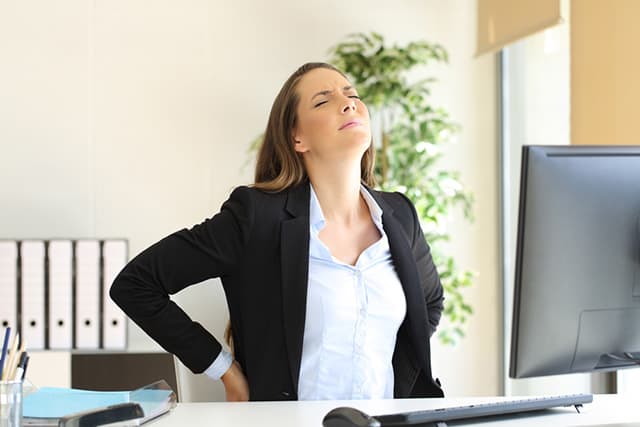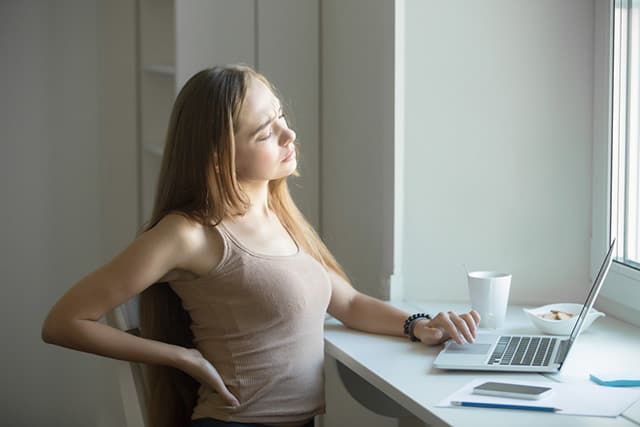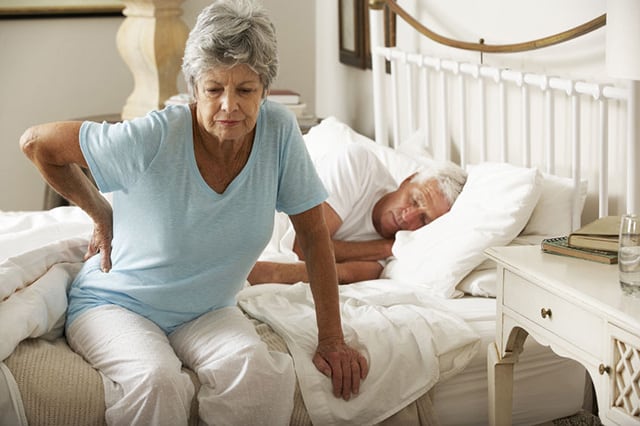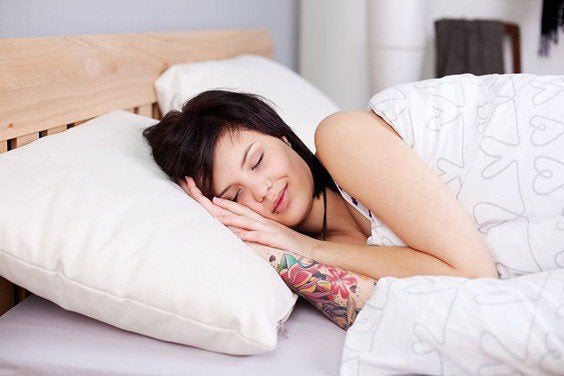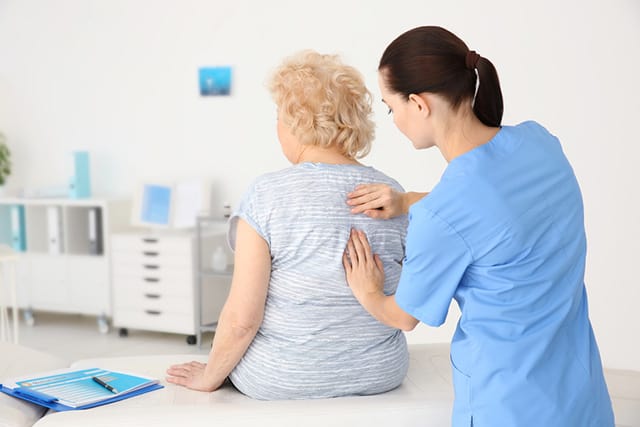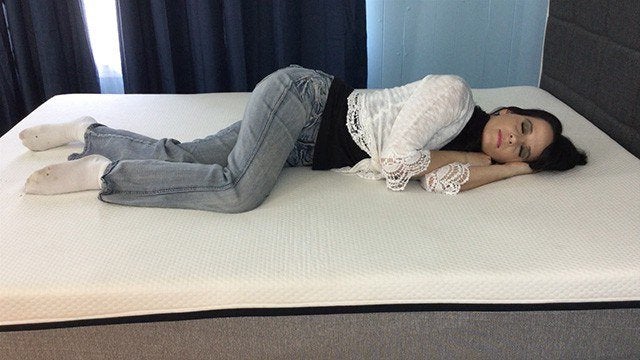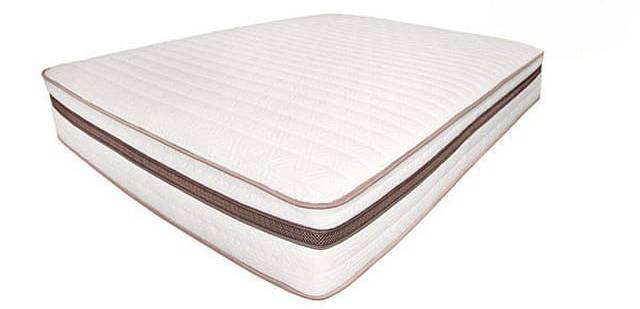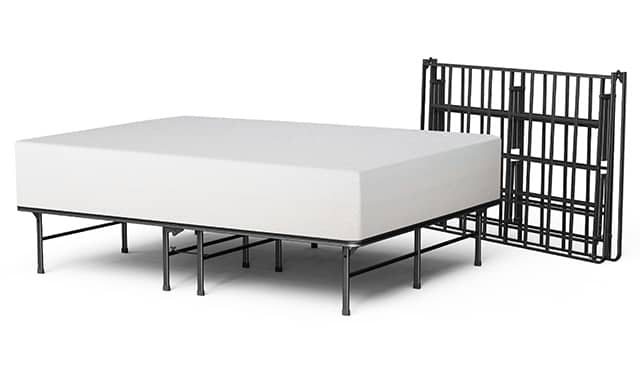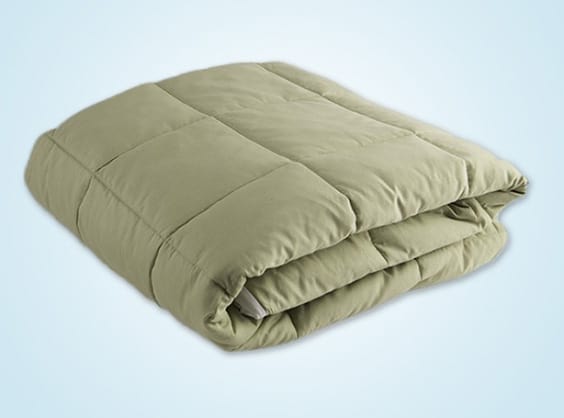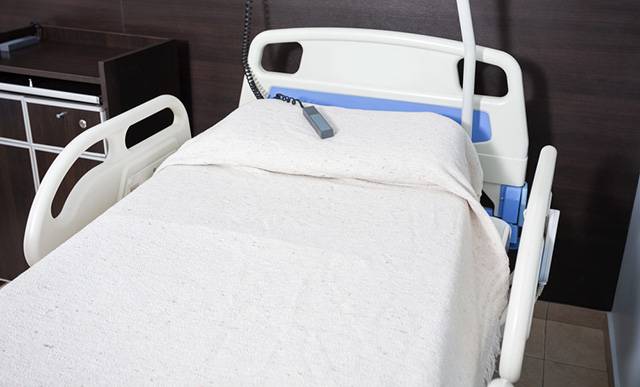Osteoporosis is a disease that is characterized by your body’s inability to produce enough bone, or a loss of bone density due to disease, diet, or illness. The word itself literally means, porous bone, and weakens your structural skeletal system, making you more susceptible to bone breaks and fracture.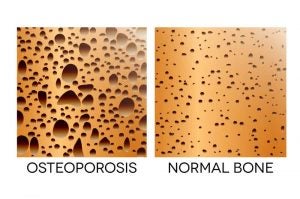
Discomfort from this disease can be wide ranging, but like any disease that affects the body your sleep may be interrupted because of it- disrupting healing processes and how your body responds to the disease as well.
This article is intended for informational and educating purposes only. Please consult a healthcare practitioner before making any changes to diet or lifestyle.
How is Osteoporosis Diagnosed?
Unfortunately, many times osteoporosis isn’t diagnosed until you break a bone and something is noticed upon an x-ray, which will lead to further tests. Often tests to determine bone density, including CT scans, and MRI are ordered if you break a bone after age 50 to either rule it out, or discover how advanced the disease is.
Once osteoporosis is determined to be present there are many course of action to help stop the progression of the disease. But there are also many things you can do to help prevent it to begin with as well, or change to help your discomfort either go away, or lessen.
What are the Symptoms of Osteoporosis?
As mentioned above, diagnosis of osteoporosis rarely happens until a bone break or fracture occurs. It often takes years of bone weakening before this occurs, and most people diagnosed have no symptoms until a painful break happens.
Spinal fractures can create bands of pain that radiate out and around your sides and result in chronic lower back pain overtime, as well as a loss of height or curving of the spine. Stress fractures of the feet also can occur due to walking, or stepping down hard upon your foot.
Breaks that occur due to falls often affects hips or other points of impact. These bones often heal slowly and may become a source of chronic pain due to the poor healing of the bone.
Those who suffer a break are up to 20% more likely to suffer a new one within the following year, so preventative care is definitely a need for osteoporosis sufferers. The lingering pain from these breaks can eventually result in long term care, and many elderly patients also may develop pneumonia and blood clots due to the bed rest that often accompanies serious breaks.
How Does Poor Sleep Affect Osteoporosis?
Adults need between 7 and 9 hours of sleep each night to support healthy mental and physical function. When you are unable to sleep due to pain, or interrupted sleep, it doesn’t take long to build up a sleep debt which occurs when your body struggles to make up for the lost sleep. This is dangerous to both short, and long term health because as you sleep your body is also actively healing itself. Lowered heart rates and respirations cause a drop n blood pressure, and allow for an increase in oxygenated blood to flow through your body.
This effect helps your bones to grow and heal, and soft tissue damage to repair itself. When your sleep is stressed, these functions are less effective, causing slow healing and increase in pain due to how your brain reads pain stimulus.
In fact, recent studies also show that poor sleep may actually support an increase in osteoporosis, or even cause it in some cases. This is because bone remodeling is interrupted due to a lack of sleep, and may cause the bones themselves to become more brittle. Plus, bone marrow, which supports bone flexibility is compromised due to poor oxygenation blood flow.
How Does Osteoporosis Affect Sleep?
Since the effects of osteoporosis are not typically felt until a bone break or fracture occurs, pain characterizes your symptoms, which can be detrimental to your sleep. Pain located on just about any point on, or in, your body can translate into your struggling to find a comfortable position, or being wakeful due to any slight movement through the night. The medications and supplements you may be prescribed can also interrupt your sleep as well.
Your sleep comfort is more important than ever when pain becomes a determining factor in your sleep decisions. Finding solutions to help alleviate pain and rest easier are crucial to a better night’s sleep. Since many times osteoporosis affects the spinal column, having the proper sleeping surface for spinal support is an important factor to consider.
Tips to Rest Easier
There are many things you can do to help influence a better rest independent of your sleep comfort. Heading of to bed with the correct mindset and a good environment is part of the sleep process.
- Create a sleep schedule and try to adhere to it daily. Getting to sleep at the same time each night supports your body’s circadian rhythm and naturally begins to prepare yourself for sleep.
- Lower your sleep environment temperature to the ideal 60 to 67 degrees needed to influence your own body’s drop in temperature and a more restful sleep.
- Dim the lights and turn off electronics that emit blue light that mimic daylight and inhibit your body’s natural production of melatonin, a sleep hormone that influences sleep.
- Avoid caffeine, sugar, and alcohol. For starters, these are components that can actually work against your body’s healing process and even leech calcium from your bones- weakening them even further. They also stay in your system for extended periods and can cause your body to continue to ‘work’, rather than rest as it should do each night.
Take Control of Your Diet
Bone density is closely tied to what you ingest. Even though osteoporosis can be caused by genetics, illness, medications, or simply a tendency to it, bone support can be achieved from a young age in relation to what you ingest. Food rich in nutrients that support your bone health can help keep you from regressing further to the disease, and more importantly can help keep you from getting it in the first place. Foods rich in calcium and Vitamin D are two of the more important nutrients your bones need for healthy support. These include:
 Dairy Dairy Sardines, tuna, and salmon Sardines, tuna, and salmon Green vegetables such as spinach, broccoli, turnip, collard, and mustard greens, cabbage, okra, and kale Green vegetables such as spinach, broccoli, turnip, collard, and mustard greens, cabbage, okra, and kale
Red fruits and vegetables rich in Vitamin C and Potassium which support calcium uptake |
What to Avoid
If you have been diagnosed with osteoporosis, your doctor has already probably told you to avoid any high intensity activities which could place strain upon your weakened bones (depending on the severity of your affliction). But you should also avoid certain foods which can keep the nutrients your bones need from being absorbed.

Beans and other legumes are high in phytates, a substance that blocks the absorption of calcium. The good news is that they have other really good nutrients, and if you soak them and cook them in fresh water you reduce the phytates. |

Salty food causes your body to lose calcium and try to aim for no more than 2,300 mg of sodium a day.
|
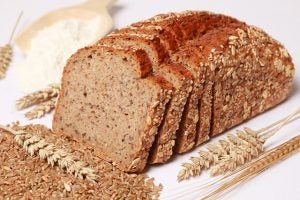
Wheat is another source of phytates and should be eaten in moderation. Calcium rich foods or supplements should be taken at least two hours before or after you consume wheat. |

As mentioned above, the ingredients in alcohol, processed sugars, and caffeine also interrupt nutrients from entering into your bloodstream and may also contribute to bone loss as well. |
Exercise for Osteoporosis
Strengthening exercises improve muscle strength and balance, decreases a risk of bone fracture, can help improve posture, and decreases pain. Before starting an exercise routine, consult with your healthcare provider to determine how advanced your osteoporosis is and what exercises are the best impact level for you.
Strength bearing and strengthening type routines are often suggested for osteoporosis patients, as well as flexibility type movements to help keep muscles toned and flexed, which supports your weakened bones. These also help increase blood flow and support a healthy heart, which supports overall healing and body health.
Avoid high impact choices such as jogging and running, as well as certain bending and twisting movements which can aggravate compression fractures in your spine. Strengthening for proper posture and overall body support should be the focus of exercise.
Types of Bedding and Sleep Products for Osteoporosis
Localized pain and spinal support are the most important considerations surrounding your sleep comfort if you suffer from osteoporosis. As with any degree of comfort, there is no such thing as one size fits all, and it needs to be personal to you. As with any approach to mattress, or any other sleep product purchases, you need to take into consideration your natural sleep positions and needs.
— Mattresses
Side sleepers need a softer surface to help contour to your shoulders and hips and keep your spine aligned, whereas back or stomach sleepers need a more firm choice to help hold up those same areas. This spinal support is especially important to a diagnosis of osteoporosis since vertebral fractures are common.
Most beds are generalized into two categories: foam and innerspring. Most foams are popular for their cradling of areas prone to pressure points, especially memory foam. However memory foam also provides a ‘sink’ that your body contours into. This can restrict movement and may be not only problematic for anyone suffering from mobility issues due to osteoporosis, but may place unnecessary strain on already weakened bones. So be sure to watch for foams that are not known for deep sinks and more supportive cradling.
Innerspring beds, or innerspring hybrids, have a coiled system within their structural support that is created to give to pressure and provide a more uplifting surface. Like memory foams there are many to choose from, but these have a tendency to be more popular for back and stomach sleepers, as well as heavier bodies.
— Smart Beds
Smart beds that use technology to help adjust to your sleep position, read temperatures, or even monitor your movements and breathing so exist and can be very helpful to help determine what comforts you need, as well as provide you with information to get a better sleep.
Adjustable beds are also very popular and can be used to lift areas of your body into position. These are extremely helpful if mobility is an issue to help keep from added strain and pain.
— Mattress Pads
Because of the nature of osteoporosis and due to how it could progress or have changing localized pain, you may want to treat the symptoms as they appear with optional comfort choices. Mattress pads of varying thicknesses and materials can be added or removed to help provide more, or less, to get what you need for a better night’s sleep.
Pads can also be used to help adjust the temperature of your bed with the use of cooling gels and breathable materials for improved air flow.
— Pillows
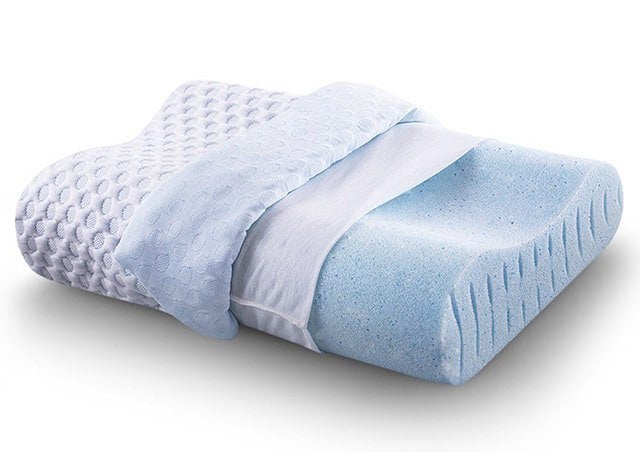
Pillows that support the neck in your preferred sleep position should be used to keep the spine straight. Flatter pillows are needed for stomach sleepers to keep the head lower, whereas side sleepers can benefit from a contouring pillow. Cervical support pillows may be the best option for back sleepers, but anything that allows the neck to rest without strain is acceptable.
— Support
Railing and grab bars can be helpful as well for anyone rehabilitating from a break or struggles with mobility. These comes in many different designs that can be temporary or permanent in nature, or even move with you or for storage.
Conclusion
Osteoporosis may be characterized by weakened bones, but unfortunately it isn’t usually diagnosed until a painful symptom of fracture or a break occurs. Because of this eating healthy and maintaining proper posture can be good preventative measures. If you have been diagnosed than adding in certain lifestyle changes can go a long way to helping reduce your risks of further injury and helping to maintain and strengthen your bones.
Unfortunately this disease is marred by pain and your comfort can be very compromised because of this, especially during the night when your sleep is critical for your healing. Choosing the best bed for osteoporosis, including mattress and pillow options, can help alleviate your pain each night so you can better rest and heal.

